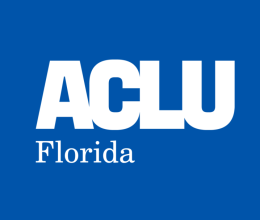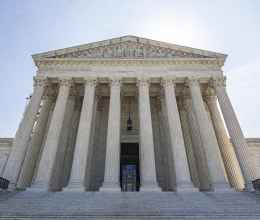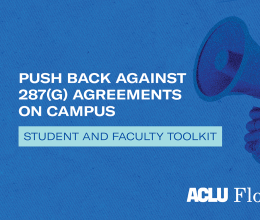
Dear College and University Presidents:
We write in response to the recent protests that have spread across our nation’s university and college campuses, and the disturbing arrests that have followed. We understand that as leaders of your campus communities, it can be extraordinarily difficult to navigate the pressures you face from politicians, donors, and faculty and students alike. You also have legal obligations to combat discrimination and a responsibility to maintain order. But as you fashion responses to the activism of your students (and faculty and staff), it is essential that you not sacrifice principles of academic freedom and free speech that are core to the educational mission of your respected institution.
The ACLU helped establish the right to protest as a central pillar of the First Amendment. We have defended those principles for more than a century. The First Amendment compels public universities and colleges to respect free speech rights. And while the Constitution does not apply directly to private institutions, academic freedom and free inquiry require that similar principles guide private universities. We approach this moment with appreciation for the challenges you confront. In the spirit of offering constructive solutions for a way forward, we offer five basic guardrails to ensure freedom of speech and academic freedom while protecting against discriminatory harassment and disruptive conduct.
Schools must not single out particular viewpoints for censorship, discipline, or disproportionate punishment
First, university administrators must not single out particular viewpoints — however offensive they may be to some members of the community — for censorship, discipline, or disproportionate punishment. Viewpoint neutrality is essential. Harassment directed at individuals because of their race, ethnicity, or religion is not, of course, permissible. But general calls for a Palestinian state “from the river to the sea,” or defenses of Israel’s assault on Gaza, even if many listeners find these messages deeply offensive, cannot be prohibited or punished by a university that respects free speech principles.
These protections extend to both students and faculty, and to speech that supports either side of the conflict. Outside the classroom, including on social media, students and professors must be free to express even the most controversial political opinions without fear of discipline or censure. Inside the classroom, speech can be and always has been subject to more restrictive rules to ensure civil dialogue and a robust learning environment. But such rules have no place in a public forum like a campus green. Preserving physical safety on campuses is paramount; but “safety” from ideas or views that one finds offensive is anathema to the very enterprise of the university.
Schools must protect students from discriminatory harassment and violence
Second, both public and private universities are bound by civil rights laws that guarantee all students equal access to education, including Title VI of the Civil Rights Act. This means that schools can, and indeed must, protect students from discriminatory harassment on the basis of race or national origin, which has been interpreted to include discrimination on the basis of “shared ancestry or ethnic characteristics,” or “citizenship or residency in a country with a dominant religion or distinct religious identity.”
So, while offensive and even racist speech is constitutionally protected, shouting an epithet at a particular student or pinning an offensive sign to their dorm room door can constitute impermissible harassment, not free speech. Antisemitic or anti-Palestinian speech targeted at individuals because of their ethnicity or national origin constitutes invidious discrimination, and cannot be tolerated. Physically intimidating students by blocking their movements or pursuing them aggressively is unprotected conduct, not protected speech. It should go without saying that violence is never an acceptable protest tactic.
Speech that is not targeted at an individual or individuals because of their ethnicity or national origin but merely expresses impassioned views about Israel or Palestine is not discrimination and should be protected. The only exception for such untargeted speech is where it is so severe or pervasive that it denies students equal access to an education — an extremely demanding standard that has almost never been met by pure speech. One can criticize Israel’s actions, even in vituperative terms, without being antisemitic. And by the same token, one can support Israel’s actions in Gaza and condemn Hamas without being anti-Muslim. Administrators must resist the tendency to equate criticism with discrimination. Speech condoning violence can be condemned, to be sure. But it cannot be the basis for punishment, without more.
Schools can announce and enforce reasonable content-neutral protest policies but they must leave ample room for students to express themselves
Third, universities can announce and enforce reasonable time, place, or manner restrictions on protest activity to ensure that essential college functions can continue. Such restrictions must be content neutral, meaning that they do not depend on the substance of what is being communicated, but rather where, when, or how it is being communicated. Protests can be limited to certain areas of campus and certain times of the day, for example. These policies must, however, leave ample room for students to speak to and to be heard by other members of the community. And the rules must not only be content neutral on their face; they must also be applied in a content-neutral manner. If a university has routinely tolerated violations of its rules, and suddenly enforces them harshly in a specific context, singling out particular views for punishment, the fact that the policy is formally neutral on its face does not make viewpoint-based enforcement permissible.
Schools must recognize that armed police on campus can endanger students and are a measure of last resort
Fourth, when enforcement of content-neutral rules may be warranted, college administrators should involve police only as a last resort, after all other efforts have been exhausted. Inviting armed police into a campus protest environment, even a volatile one, can create unacceptable risks for all students and staff. University officials must also be cognizant of the history of law enforcement using inappropriate and excessive force on communities of color, including Black, Brown, and immigrant students. Moreover, arresting peaceful protestors is also likely to escalate, not calm, the tensions on campus — as events of the past week have made abundantly clear.
Schools must resist the pressures placed on them by politicians seeking to exploit campus tensions
Finally, campus leaders must resist the pressures placed on them by politicians seeking to exploit campus tensions to advance their own notoriety or partisan agendas. Recent congressional hearings have featured disgraceful attacks by members of Congress on academic freedom and freedom of speech. Universities must stand up to such intimidation, and defend the principles of academic freedom so essential to their integrity and mission.
The Supreme Court has forcefully rejected the premise that, “because of the acknowledged need for order, First Amendment protections should apply with less force on college campuses than in the community at large.”
“Quite to the contrary,” the court stated, “the vigilant protection of constitutional freedoms is nowhere more vital than in the community of American schools.” In keeping with these values, we urge you to resist the temptation to silence students or faculty members because powerful voices deem their views offensive. Instead, we urge you to defend the university’s core mission of encouraging debate, fostering dissent, and preparing the future leaders of our pluralistic society to tolerate even profound differences of opinion.






